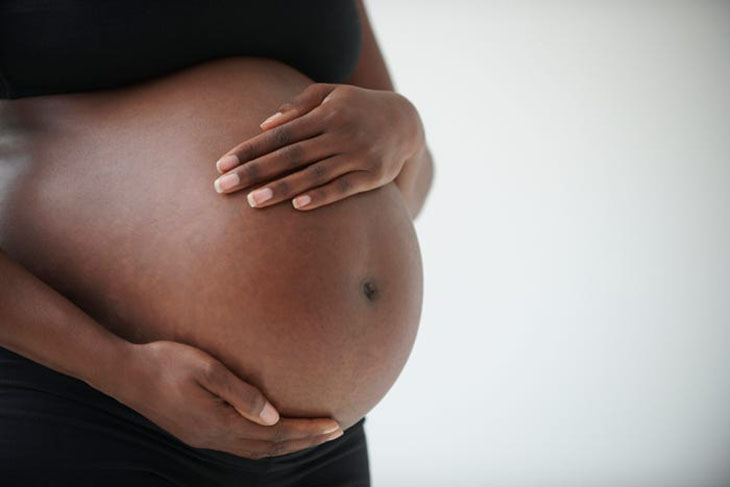
When researchers looked into the maternal death rate, they found that women of African-American origin had the highest mortality rate. There were 55.3 deaths for every 100,000 live births. This meant that there was an uptake of 26 percent when compared to the statistics from the previous year.
The number of U.S. maternal deaths in 2020 took a leap up from 14 percent in 2019. The numbers went from 754 to 861, which is considered concerning. The numbers have been reported by National Center for Health Statistics (NCHS).
While they didn’t look into the reason behind the rise, many experts believe that COVID-19 and interruptions in care because of the stay-at-home orders during the pandemic may be the culprit behind the issue as well. “Yes, the pandemic likely contributed to the increase from 2019 to 2020 and beyond that,” Donna Hoyert, PhD, said. She is a health scientist in the NCHS’s Division of Vital Statistics and the author of the report. She shared her findings in interview done with ABC news.
“As the pandemic plays out, we want to see how it affects overall mortality rates and our trend of comparable data over time,” she added. Other studies have also been released and they all documented the continuing mortality from COVID-19 and excess mortality that is linked to the pandemic. Dr. Hoyert supplemented to the studies already made.
A study that was published in July 2021 made use of details from insurance data to look at 489,471 hospital deliveries between the months of March and September 2020. They saw that women who were stricken with COVID-19 were at greater risk of several conditions, that of which included mortality.
2 Out of 3 Maternal Deaths Can be Prevented
A maternal death was defined by the World Health Organization as “the death of a woman while pregnant or within 42 days of termination of pregnancy, irrespective of the duration and the site of the pregnancy, from any cause related to or aggravated by the pregnancy or its management, but not from accidental or incidental causes.”
In the United States, a maternal death is linked to issues that are related to pregnancy or how it is managed. Details from deaths from accidental or incidental causes are excluded here. Studies show that around two-thirds of pregnancy-related deaths that have happened in the US have actually been preventable. This is according to findings made by the Centers for Disease Control and Prevention (CDC).
Maternal Death Rates Were Seen to be Significantly Higher for Black and Hispanic Women
It must be noted that there was an increase in maternity mortality in 2020 for women of all ages and all walks of life, but in terms of race, the overall rise was largely seen in black and Hispanic women. Here are some of the facts observed:
- Black women had the highest maternal mortality rate out of the three racial or ethnic groups that had been included in the report. It was also seen here that there had been 55.3 deaths for every 100,000 live births. When compared to the previous year, this showed a total of 26 percent increase.
- As for the white women in the group, they had roughly 19.1 deaths per 100,000 births. There was still an increase of 7 percent when compared to the previous year.
- Hispanic women, on the other hand, had a rate of 18.2 deaths per 100,000 births. Although they do have the lowest mortality rate out of the three groups, the number of pregnancy-related deaths for them jumped by 44 percent in 2020.
“This report is an accurate reflection of my experience, especially in regard to Black women,” April Miller, MD, MPH, said. She is an assistant professor at the Wake Forest School of Medicine in Winston-Salem, North Carolina. She was not involved with the report of the new study. “As a Black woman and an ob-gyn, I am alarmed at the increase of the mortality rate and even more alarmed at the huge disparity between Black women and non-Hispanic white women, which is 2.9 times higher in Black women,” Dr. Miller added.
Pregnancy-Related Deaths Higher for Older Women
In terms of age groups, the highest mortality rate was for women over the age of 40. There was about 107.9 deaths per 100,000 births. When calculated, this was about 7.8 times higher than for women aged 25 or younger.
There are risks for every pregnancy, among which are premature birth, gestational diabetes, and high blood pressure. However, the risks increase for those who become pregnant after the age of 35. This was according to the studies made by Mayo Clinic.
The U.S. Still Lags Behind Other Developed Countries in Terms of Preventing Maternal Deaths
While the pandemic exacerbated the maternal rate, the United States was still worse when compared to other developed countries. A 2020 report by the Commonwealth Fund saw how the U.S. had the highest death rate for mothers, and the statistics were compared to 10 other developed countries.
The authors of the study saw that the maternal death rate was 17 deaths per 100,000 live births in 2018. This was more than double the rate of most other high-income countries. On the other hand, countries such as the Netherlands, Norway, and New Zealand all have 3 or less maternal deaths for every live birth.
“Although the U.S. is a first world country, many people live in third world conditions,” stated Miller. “For example, there are many food deserts — areas that have limited access to affordable and nutritious food — in the U.S.,” she continued.
Poor Heart Health Is Likely a Culprit when It Comes to Maternal Death
“We have increased rates of obesity, diabetes mellitus, and chronic hypertension relative to these other countries, which can certainly have an impact on the greater incidence of maternal death,” said Shari Martin Lawson, MD, the division director of general obstetrics and gynecology. She’s also an assistant professor of gynecology and obstetrics at Johns Hopkins Medicine in Baltimore. She had shared her thoughts in a previous interview done with Everyday Health.
A study published this month in Circulation saw that only about two in five U.S. women who gave birth in 2019 had good heart health before they got pregnant. Overweight and obesity were the main risk factors. Following these were high blood pressure and diabetes. A less than ideal heart health puts the mothers-to-be and their children at risk, with heart disease as the culprit behind more than one in four pregnancy-related deaths (around 26.5 percent). This was according to the American Heart Association Heart Disease and Stroke Statistics 2022 Update.
Goal of the Health Officials is to Increase Both Preventive Funding and Awareness of Maternal Death in the U.S.
Efforts are underway and the goal is to lower the number of those who die of pregnancy- and delivery-related complications. In 2021, the Biden administration launched the Black Maternal Health Week. This is set to be recognized every April 11–17 every year. The White House has pledged to lower what the call the “unacceptably high maternal mortality and morbidity rates and to [tackle] health disparities that are rooted in systemic racism.”
The pledge comes with an increased funding for the training of healthcare workers. They will be better equipped to recognize bias and make sure that the women enjoy the protection of civil rights especially in the healthcare system.
Hence, this was the inception of the HEAR HER campaign, which hones in on the education of women about urgent maternal warning signs that occur during and after pregnancy. Their goal is to have better communication between the women and their healthcare providers.
“Many people have limited health literacy, and they do not know what questions to ask their healthcare providers,” said Miller.
Signs and Symptoms to Watch for During Pregnancy and a Year After Delivery
According to the experts in CDC, there are early warning signs of potentially life-threatening circumstances that should be more aware of. Here are the signs they need to watch out for:
- Headache that won’t disappear. In fact, it gets worse over time.
- Dizziness or fainting spells.
- Changes in their vision.
- A fever of 100.4 or higher any time during and after the pregnancy.
- Extreme swelling that happens in the hands or face.
- Negative thoughts such as harming yourself or your baby.
- Difficulty breathing.
- Chest pain.
- Racing heart
- Severe nausea and vomiting
- Severe belly pain that lingers and stays.
- Baby’s movement stops or slows down.
- Vaginal bleeding or fluid leaking in the nine months of pregnancy.
- Heavy vaginal bleeding or discharge that happens after you give birth.
- Severe swelling, redness, or pain that happens in the leg or arm.
- Extreme fatigue. No energy to engage in practically any form of activity.



